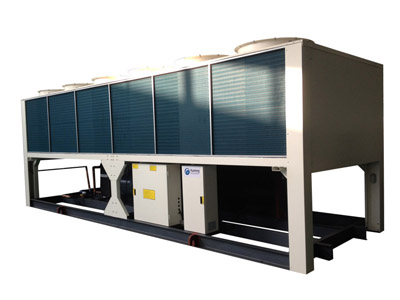Basic Difference Between an AC and Chiller System
Author:
CC
Feb. 23, 2024
159
0
0
Air conditioning (AC) and chiller systems are both used for cooling indoor spaces, but they operate on different principles and are suitable for different applications. In this article, we'll explore the fundamental differences between AC and chiller systems to help you understand their distinct roles and functionalities in cooling technology.

1. Operating Principle:
AC System: An air conditioning system works on the principle of vapor compression refrigeration. It absorbs heat from indoor air through an evaporator coil, transfers it to the outdoor condenser unit, and releases it into the atmosphere. The cooled air is then circulated back into the indoor space, lowering the temperature and humidity levels.
Chiller System: A chiller system also operates on the vapor compression cycle but is designed to cool water or other liquid coolant instead of air. The chilled water is then circulated through a network of pipes to absorb heat from indoor spaces, industrial processes, or equipment, providing efficient cooling across large areas or buildings.
2. Cooling Medium:
AC System: Air conditioning systems directly cool and dehumidify the air in indoor spaces. They are commonly used in residential, commercial, and small-scale applications to maintain comfortable temperatures and humidity levels indoors.
Chiller System: Chiller systems cool water or a specialized coolant, which is then distributed through pipes to air handling units, fan coil units, or process equipment. They are typically used in larger buildings, industrial facilities, data centers, and commercial complexes where centralized cooling is required.
3. Cooling Capacity:
Explore more:10 Best Water Cooled Rectifiers for Purchase Stage?What should you consider when purchasing a chiller?5kA Water Cooled Rectifier: Top FAQs Answered!What is the formula for refrigerating capacity?4. System Components:
AC System: Typical components of an air conditioning system include an indoor evaporator coil, outdoor condenser unit, compressor, expansion valve, and air handling unit (AHU) or ductwork. These components work together to extract heat from indoor air and maintain comfortable temperatures indoors.
Chiller System: A chiller system consists of a chiller unit (compressor, evaporator, condenser), chilled water storage tank, pumps, cooling towers (for air-cooled chillers), and distribution piping. The chiller unit generates chilled water, which is then circulated through the building's HVAC system to provide cooling to various spaces or processes.
Conclusion:
In summary, while both air conditioning and chiller systems are used for cooling purposes, they differ in terms of operating principles, cooling mediums, cooling capacities, and system components. AC systems are suitable for localized cooling in residential and small commercial spaces, while chiller systems are designed for large-scale cooling applications in commercial buildings, industrial facilities, and complex infrastructures. Understanding the distinctions between these systems is essential for selecting the most appropriate cooling solution for specific cooling requirements and building configurations.
Explore more:Top 13 Best Chinese Wholesalers WebsitesChiller Troubleshooting Chart: Expert Tips vs Common MisconceptionsHow to troubleshoot a chiller high-pressure alarm?Is the Future of Cooling Technology Water-Cooled?Tips for Buying a New Air Conditioning - AMS AC and ...The Benefits of Using Cold Room Freezer: A Comprehensive GuideHow to Choose air handler and condenser












Comments
Please Join Us to post.
0